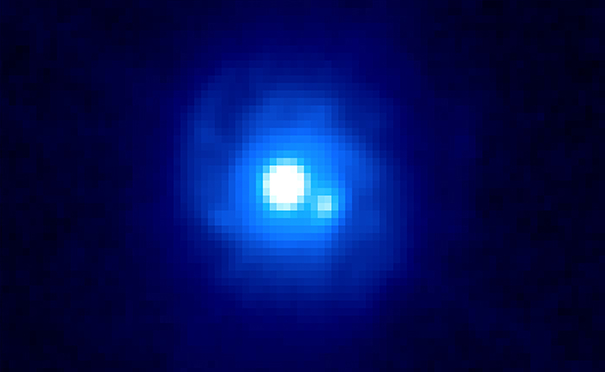
Astronomers observe gamma rays from a galaxy 4.35 billion light years away
Telescopes are cool, but did you know they can occur naturally in outer space? They can, and they’re called gravitational lenses. Formed in the rare instances when the cosmos align to allow the gravitational field of a massive object to bend light, they create a telescopic effect, allowing for all sorts of new research opportunities. At NASA’s Fermi observatory, a team of international astronomers have made the first ever gamma ray measurements of such a lens.
“We began thinking about the possibility of making this observation a couple of years after Fermi launched, and all of the pieces finally came together in late 2012,” said Teddy Cheung, lead scientist for the finding and an astrophysicist at the Naval Research Laboratory in Washington.
The measurements were made possible beginning in September of 2012, when scientists observed powerful gamma ray flashes emanating from a constellation called Triangulum, located some 4.35 billion light years from Earth. The flares were detected using Fermi’s Large Area Telescope (LAT). The source of the flares was the uncreatively named B0218+357, classified as a blazer galaxy. With a huge black hole at its center, as matter converges, some of it gets blasted outward as jets of particles moving extremely fast, nearly the speed of light.
Long before light from B0218+357 reaches us, it passes directly through a face-on spiral galaxy — not unlike our own — about 4 billion light-years away. As the light splits and bends into different paths, scientists receive what are known as dual images of the blazar in the background.
“One light path is slightly longer than the other, so when we detect flares in one image we can try to catch them days later when they replay in the other image,” said team member Jeff Scargle, an astrophysicist at NASA’s Ames Research Center in Moffett Field, Calif.
All told, Cheung was able to use the LAT to identify three instances of flares with delayed playback of 11.64 days. That’s about a day longer than radio telescopes register radio waves traveling through the same lens, but the astronomers believe radio waves emanate from a different region and therefore take a slightly different route before being picked up by telescopes.
“Over the course of a day, one of these flares can brighten the blazar by 10 times in gamma rays but only 10 percent in visible light and radio, which tells us that the region emitting gamma rays is very small compared to those emitting at lower energies,” said team member Stefan Larsson, an astrophysicist at Stockholm University in Sweden.
The scientists say that comparing radio and gamma-ray observations of additional lens systems could help provide new insights into the workings of powerful black-hole jets and establish new constraints on important cosmological quantities like the Hubble constant, which describes the universe’s rate of expansion.
This accomplishment opens new avenues for research, including a novel way to probe emission regions near supermassive black holes. It may even be possible to find other gravitational lenses with data from the Fermi Gamma-ray Space Telescope.
Leave a Reply